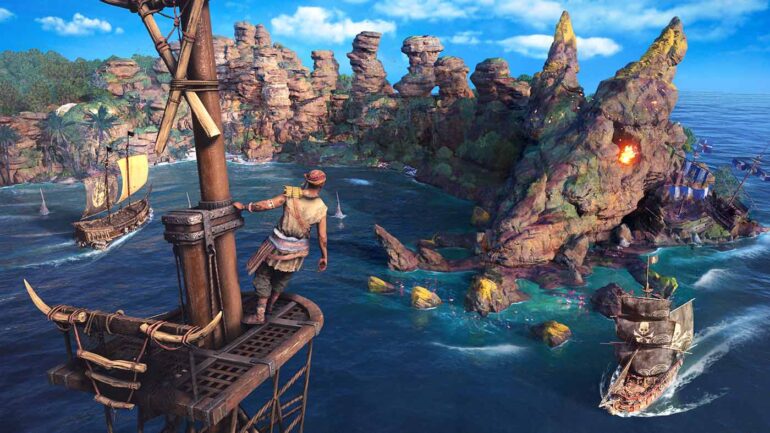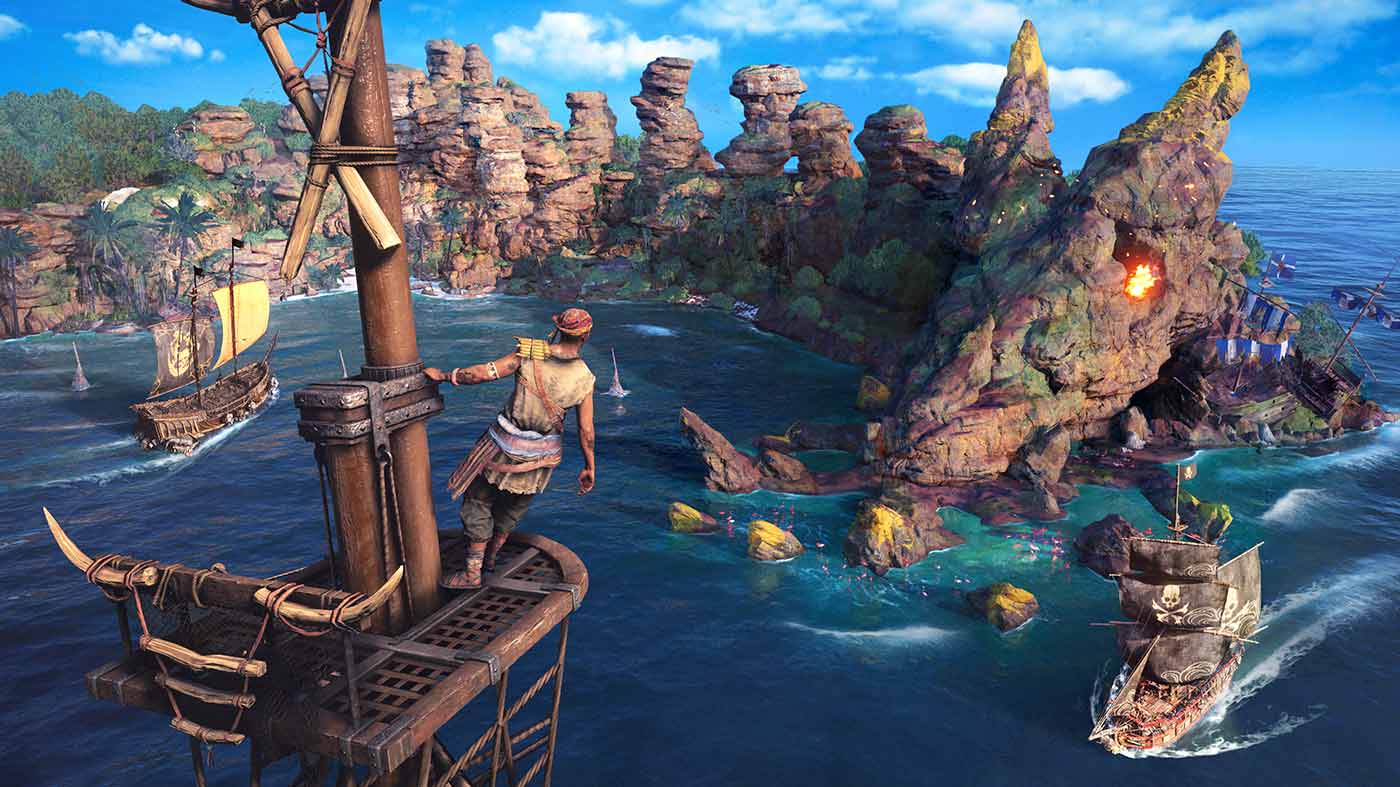On Skull and Bones’ title screen – something you may or may not have ever expected to actually see – there’s a small prompt that simply says, “Press any button to rule the seas.” It’s an innocuous game trigger, but something about its phrasing kept echoing through my head as I sunk hours into Ubisoft’s latest outing. This throwaway bit of UI guidance is an inadvertent portent for the experience of Skull and Bones, the promise that what you’re about to experience, no matter how grand in aesthetics or romanticised by a lengthy development cycle, will ultimately be as digestible and disposable as a decently constructed tourist trap.
I’m ahead of myself here, sorry, it’s been a long week under a blaring sun on salt water-worn decks. Skull and Bones is ostensibly a lot of things. Sometime in the late 17th century, a naval war is being waged in the Indian Ocean between various factions, all of whom envision a different kind of freedom, or control, for or of the world around them. Into this maelstrom you arrive, a nameless little cully tossed against the rocks of fortune and fate as your shipwrecked arse lands in the office of John Scurlock, the pirate kingpin of Sainte-Anne, a stronghold of the craven. Scurlock offers you the keys to the envisioned new kingdom, setting you on a path of scum and villainy in service of riches and power.
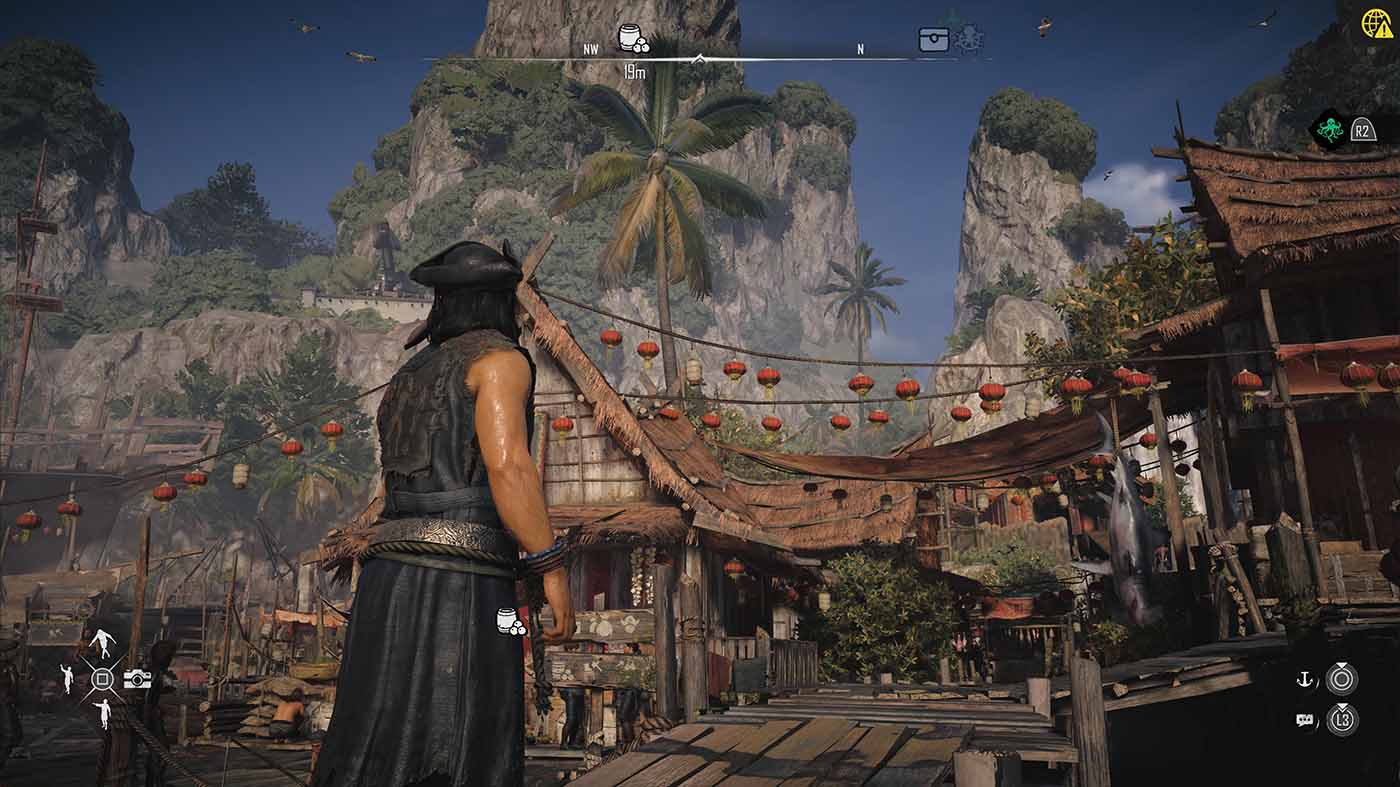
Across the game’s opening hours, you’ll hear dozens of phrases and ideas. Talk of capitalism run amok, the overarching threat of the massive trading governmental powers, the plight of the nomadic sea people or the champions of the oppressed making plans in the north seas. It’s a healthy mix of genre cliches, quest hooks, and vague gestures toward socially progressive idealism that have found their way into Ubisoft’s lexicon. Delivered with unimpeachable politeness by a small cast of quest givers and plot figureheads, this pastiche forms the framework for much of what you’ll be asked to do in Skull and Bones, every single element of the game eventually bending back around to completing a small set of objectives in the name of some faction or another.
Before you can set out on the high seas for some swashbuckling though, you’ll need a ship to call your own. Skull and Bones’ customisable ships are a highlight of its main campaign, your pirate’s rise to power is directly reflected by the strength and grandeur of the vessels they can command. As you rise in Infamy, the game’s separate player level, you’ll unlock additional ships that require increasing levels of resources gathered in the open world and during quests. Ships are categorised into small, medium, and large, and while this is technically a variety of choice, the moment-to-moment of Skull and Bones all but requires a consistent push toward the next available model, never giving you much of a reason to revert to an older ship for the sake of speed or manoeuvrability, for example.
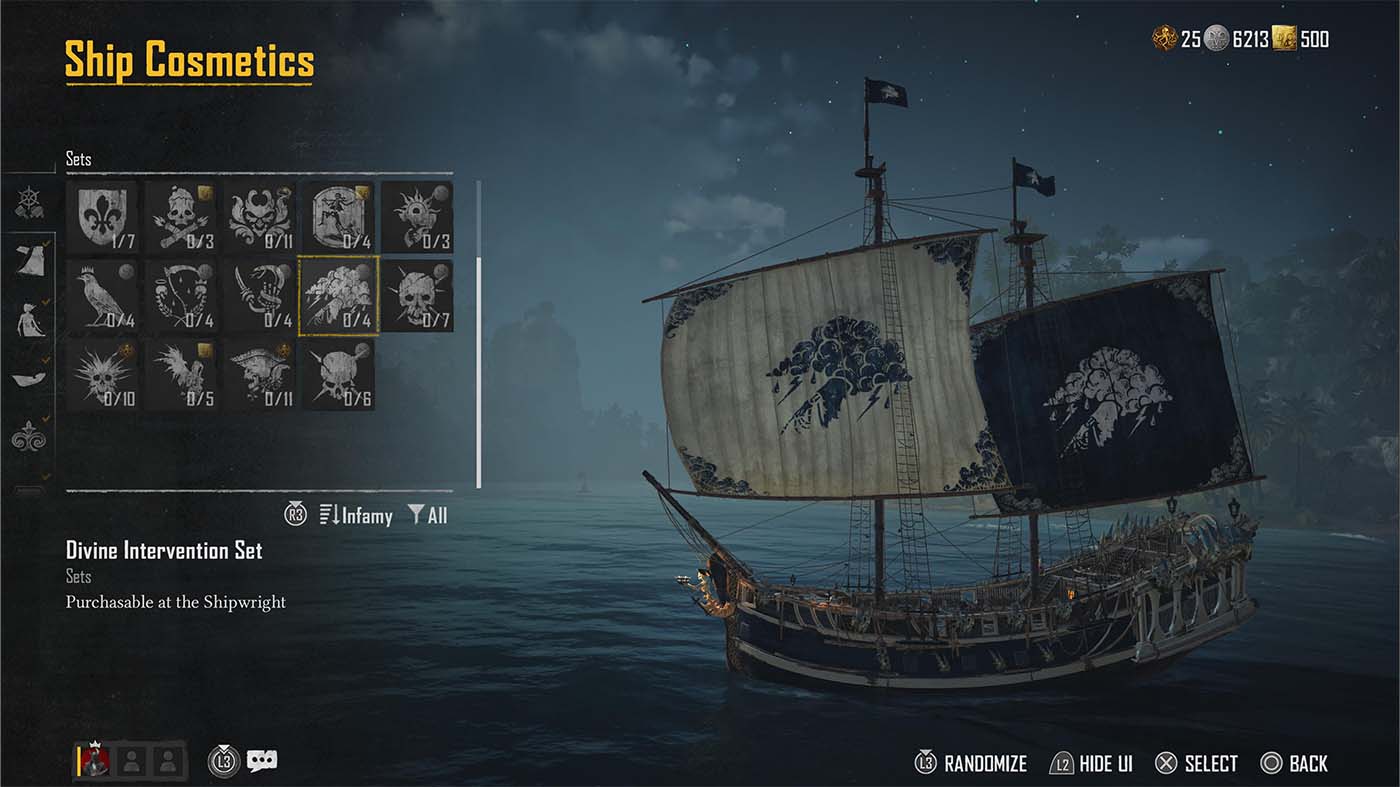
This odd bottlenecking of player choice is necessitated by the raw numbers game Skull and Bones needs to play with you. While you may prefer the handling and aesthetics of a medium ship, its baseline speed and defensive capabilities will always be outclassed by a larger ship, even with the somewhat flexible weapon and passive boost systems that raise the ships numerical class ranking. Endgame ships are further classified by standard multiplayer roles like DPS and healer, further fracturing player expression and choice across predetermined, group-dependent requirements. The accompanying visual flourishes that are more directly under your control fare better at least, with a healthy supply of vibrant adornments and customisable components meaning your ship will at least look the way you envisioned.
AMAZON HAS THE CHEAPEST SHIPPED COPY AT $89 WITH FREE DELIVERY
Once on open water, Skull and Bones’ strengths, shortcomings, and potential bob to the surface. With a design backbone as strong as Assassin’s Creed IV: Black Flag, it would have been surprising if the core sailing felt anything other than fantastic. And while Skull and Bones leans a little harder into arcade-control than the hefty realism its art direction implies, the sheer joy I felt when navigating a storm or cresting a wave is undeniable. The game’s first-person camera perspective, while utterly useless in combat, makes for a heightened and immersive experience as its emergent weather and lighting systems play out beautifully across the deck. The ship’s crew is reactive to the world around them, often pointing out local sights or incoming threats too, and my pet lemur’s skittery movements were always welcome company.
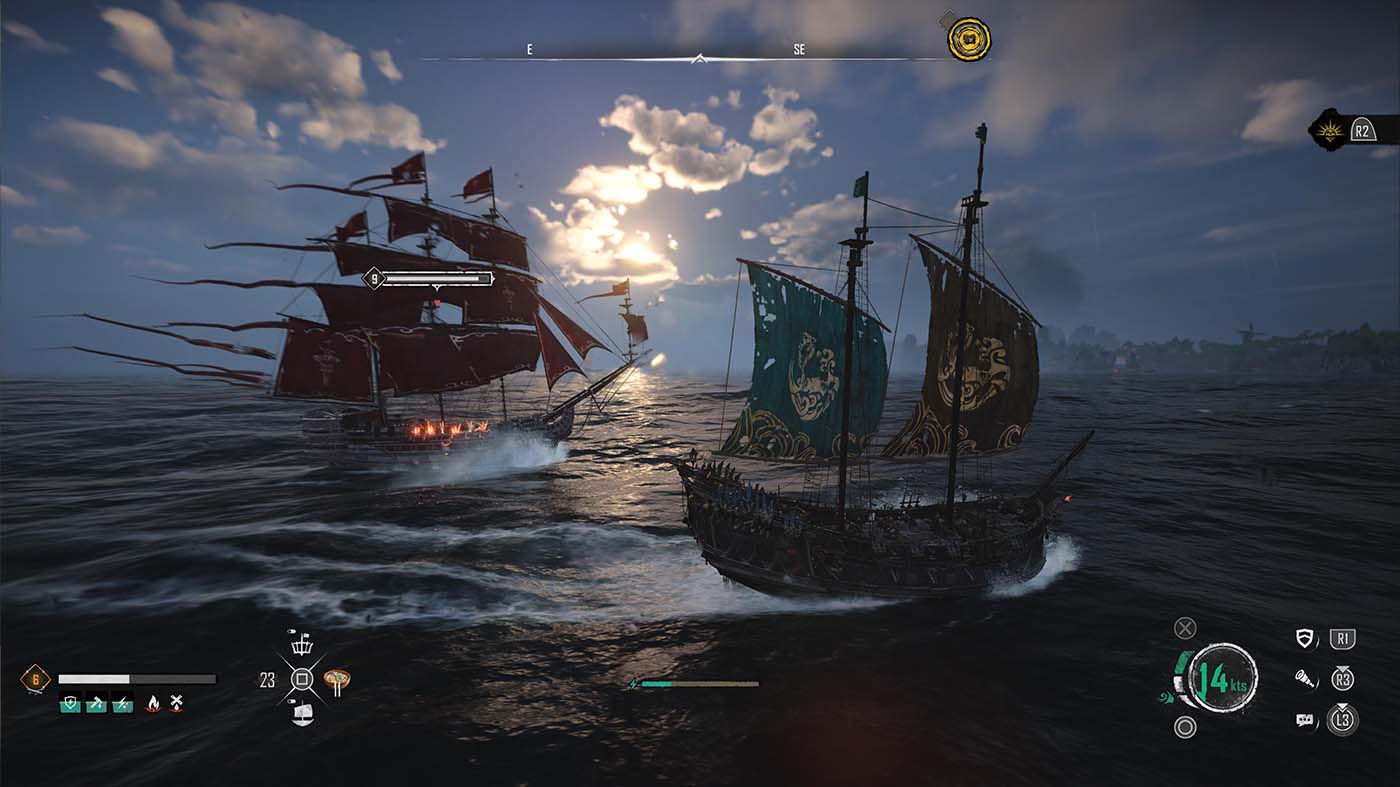
The heavily marketed naval combat meant to define the core of Skull and Bones ultimately treads water for much of the game, neither fully sinking or swimming. While bolstered with weather effects and impressive particle and destruction physics, blowouts between ships are only ever overwhelmingly fine, keeping on par with, and occasionally lagging behind, the game’s 2013 blueprint. The concise user-friendliness of Black Flag’s arching aiming has been replaced with contemporary crosshairs in a move seemingly meant to invoke deeper player involvement in things like gravity and momentum. Likewise, boarding has become an inert inventory screen, your pirate rooted to the spot as a short cutscene shows your crew having more fun than you. Neither change is disastrous, but nor are they additive and combined with the arcade-y movement and increasingly large enemy health pools, combat becomes a visually spectacular chore at a base level.
Traversing Skull and Bones’ huge ocean map is similarly peppered with immersive, thrilling moments and lengthy stretches of downtime. As both critic and player, I am categorically in favour of meditative silence while moving through an open world, and there are glimpses of this kind of melancholic peace found in Skull and Bones. Things will inevitably return to live-service adjacent shenanigans though, as infinitely spawning enemy ships and other players cut into your brief respites on open water. But with space comes raw distance and while the scope of this world is admirable, doing battle with headwinds that slow your pace and a fast-travel system that gouges into your quest profits, moving through the game loses its charm far quicker than I would have liked.
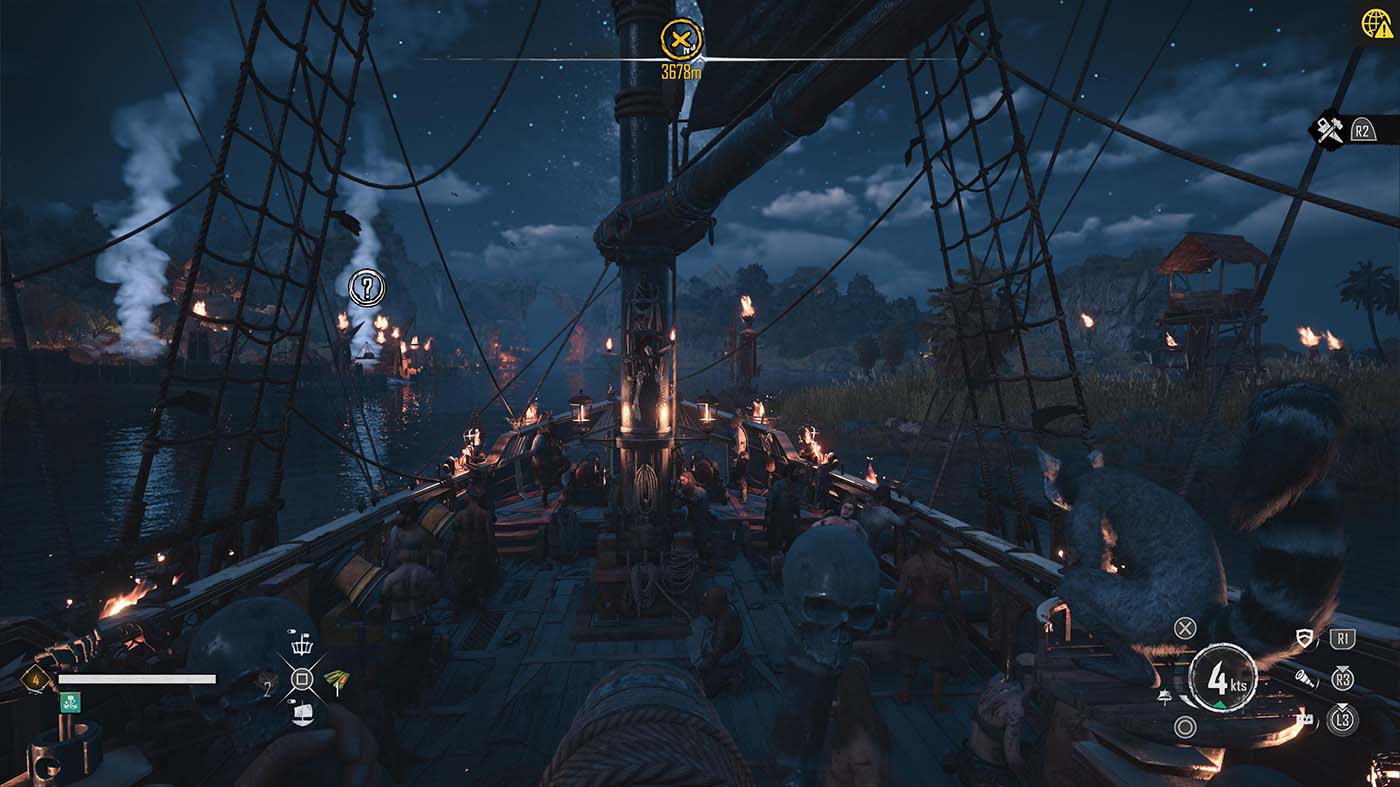
From here, Skull and Bones spends a lot of time trying to elevate or obfuscate this core deficiency with varying degrees of success. Endgame content gets closest, kicking things off with fantastical boss encounters like the ghost ship and sea monster, before The Helm begins its earnestly interesting efforts toward establishing an in-game economy. Through control of trade routes and running deliveries via daily quests, you can operate a nifty little side hustle in which you use labour camps to refine materials that are then illegally traded for profit. The majority of this is played out on charts and maps, the only other active engagement possible is more sailing and combat, making for a middling loop.
Elsewhere, you can initiate raids on settlements, a kind of risk/reward enclosed area that sees your ship sailing in circles for minutes at a time while enemy waves spawn and a loot bar fills up. Most of your quests will see you running errands back and forth across the ocean, occasionally hunting down rogue ships or stopping to use the game’s rudimentary harvesting quick-time event. Skull and Bones’ omission of any true on-foot gameplay wreaks havoc on its pacing here, as you are technically free to explore a few islands and locations, but interactivity is severely limited to throwaway dialogue choices with NPCs and clumsy treasure hunts. Sketched maps with big red Xs are a wonderful idea but the game’s lean into realism and dense fidelity means finding the designated spot is often tiring.
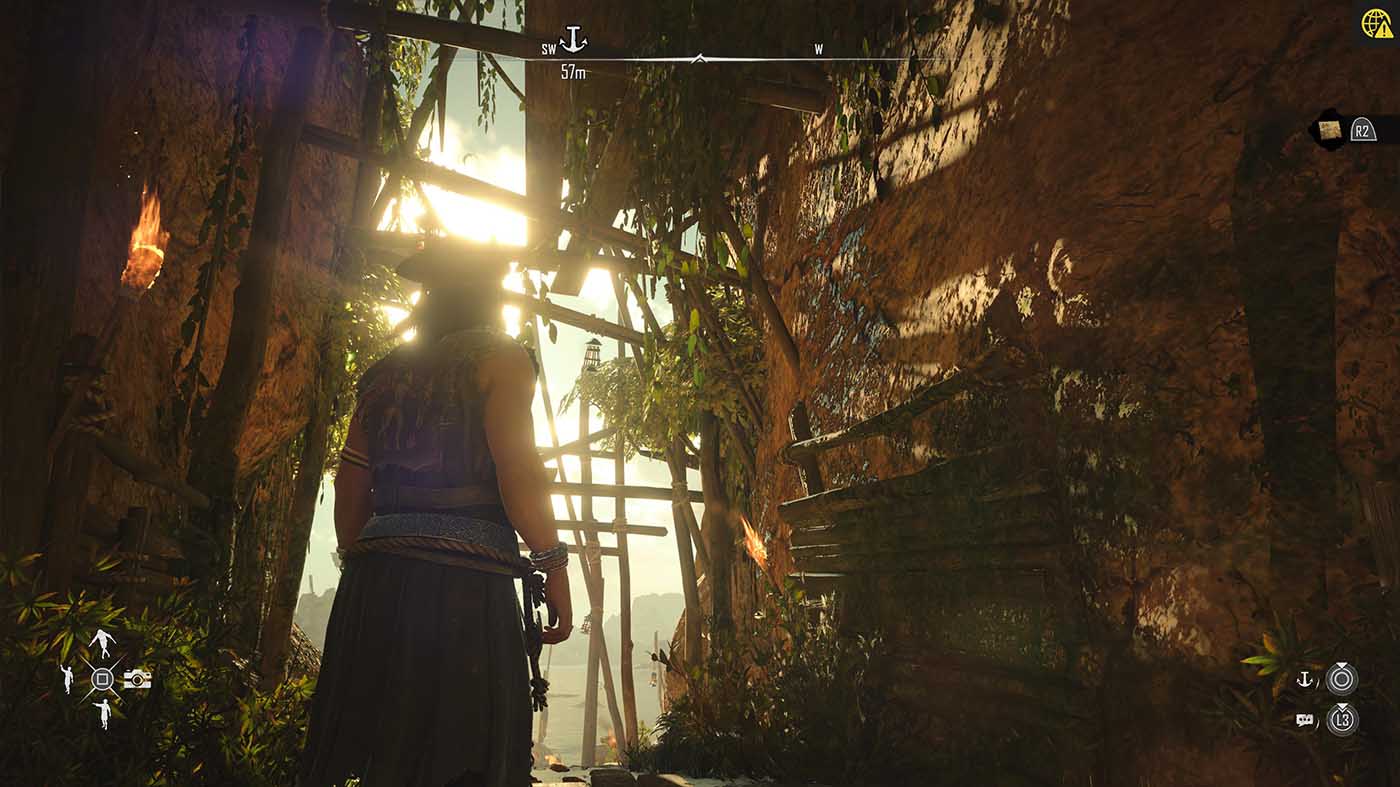
Skull and Bones almost always keeps you at arm’s length, its experiential comparison point being closer to the Disneyland flavour of Pirates of the Caribbean than the films. Everything is minutely curated and sanded down for minimal player friction – press any button, rule those seas, it’s not going to stop you. It’s a pervasive tonal and mechanical creep that makes this admittedly gorgeous world into a tourist attraction, animatronic NPCs spouting generic calls to action while lifting empty flagons to plastic mouths as unseen speakers pipe in region-accurate animal sounds. It’s overwhelmingly artificial, whatever efforts made to emulate biomes and ideologies of the time are unfortunately painted over by the kind of passive world live-service titles seemingly require.
And look, I like Disneyland fine. With a couple of good mates and a manageable day plan in mind, you can have a decent time there and much the same could be said of Skull and Bones. There’s a reason our previews were positive; the game’s opening hours are brimming with promise and potential, and perhaps in short bursts its lacklustre elements wouldn’t break the surface as quickly. But here is a game that wants to be played for far longer than it has the systems to properly sustain, its ambitious ideas lapping its raw capabilities. There’s a glimpse of a decent attraction here and there, but I can’t help but wonder if Ubisoft has mistaken the appeal of a day pass for the promise of a yearly membership.


